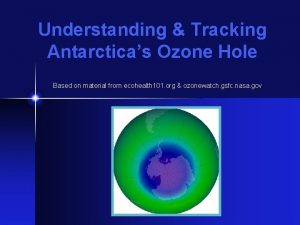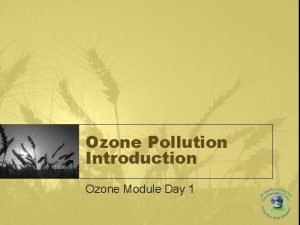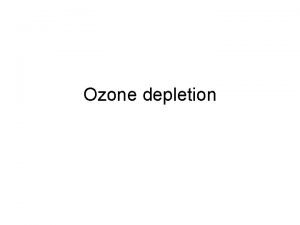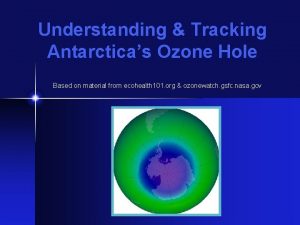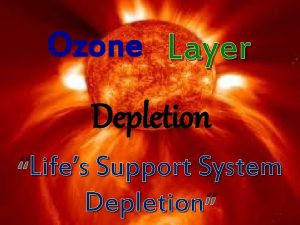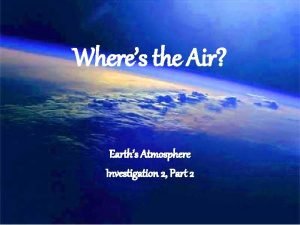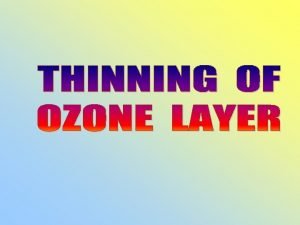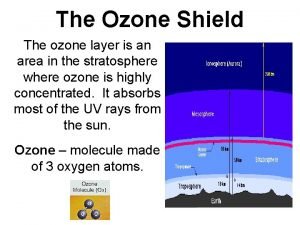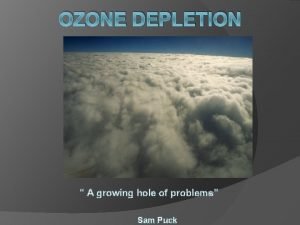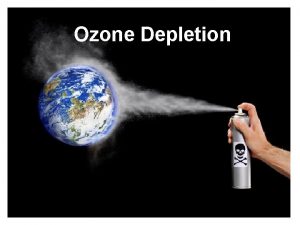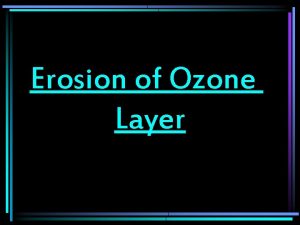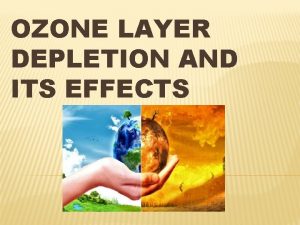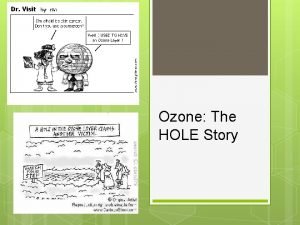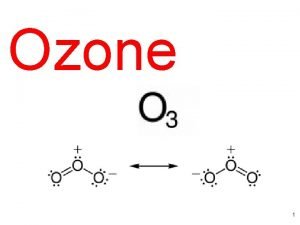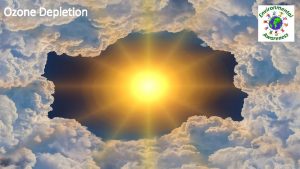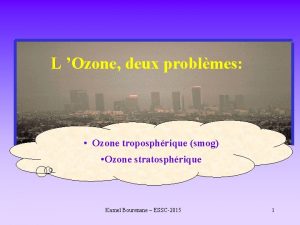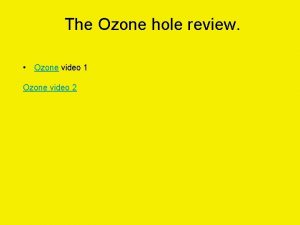Ozone Ozone The ozone layer is the layer











- Slides: 11

Ozone

Ozone • The ozone layer is the layer of the atmosphere at an altitude of 15 to 40 km in which ozone absorbs ultraviolet solar radiation. Ozone is a molecule made of three oxygen atoms. • UV light is harmful to organisms because it can damage the genetic material in living cells. • By shielding the Earth’s surface from most of the sun’s UV light, the ozone in the stratosphere acts like a sunscreen for the Earth’s inhabitants.

Chemicals That Cause Ozone Depletion • Chlorofluorocarbons (CFCs) are hydrocarbons in which some or all of the hydrogen atoms are replaced by chlorine and fluorine. • They are used in coolants for refrigerators and air conditioners and in cleaning solvents. They were also used as a propellant in spray cans of everyday products such as deodorants, insecticides, and paint. • Their use is now restricted because they destroy ozone molecules in the stratosphere.

Chemicals That Cause Ozone Depletion • At the Earth’s surface, CFCs are chemically stable. They do not combine with other chemicals or break down into other substances. • But, CFC molecules break apart high in the stratosphere, where UV radiation is absorbed. • Once CFC molecules break apart, parts of the CFC molecules destroy the protective ozone.

Chemicals That Cause Ozone Depletion • Each CFC molecule contains from one to four chlorine atoms, and scientists have estimated that a single chlorine atom in the CFC structure can destroy 100, 000 ozone molecule.

Ozone Hole • In 1985, studies by scientists working in Antarctica revealed that the ozone layer above the South Pole had thinned by 50 to 98 percent. • The ozone hole is a thinning of stratospheric ozone that occurs over the poles during the spring. • This was the first news of the hole, and was published in an article in the scientific journal Nature.

Ozone Hole • After the results were published, NASA scientists reviewed data that had been sent to Earth by the Nimbus 7 weather satellite. They were able to see the first signs of ozone thinning in the data from 1979. • Although the concentration of ozone fluctuated during the year, the data showed a growing hole. • Ozone levels over the Arctic have decreased as well. In March 1997, ozone levels over part of Canada were 45 percent below normal.

The Ozone Hole

How Does the Ozone Hole Form? • During the dark polar winter, strong circulating winds over Antarctica, called the polar vortex, isolate cold air from surrounding warmer air. The air within the vortex grows extremely cold. • Polar stratospheric clouds are clouds that form at altitudes of about 21, 000 m during the Arctic and Antarctic winter or early spring, when air temperatures drop below – 80°C.

How Does the Ozone Hole Form? • On the surfaces of polar stratospheric clouds, the products of CFCs are converted to molecular chlorine. • When sunlight returns to the South Pole in the spring, molecular chlorine is split into two chlorine atoms by UV radiation. The chlorine atoms rapidly destroy ozone. • The destruction of ozone causes a thin spot, or ozone hole, which lasts for several months.

How Does the Ozone Hole Form? • You may be thinking, “If ozone is also being produced as air pollution, why does this ozone not repair the ozone hole in the stratosphere? ” • The answer is that ozone is very chemically reactive. Ozone produced by pollution breaks down or combines with other substances in the troposphere long before it can reach the stratosphere to replace ozone that is being destroyed.
